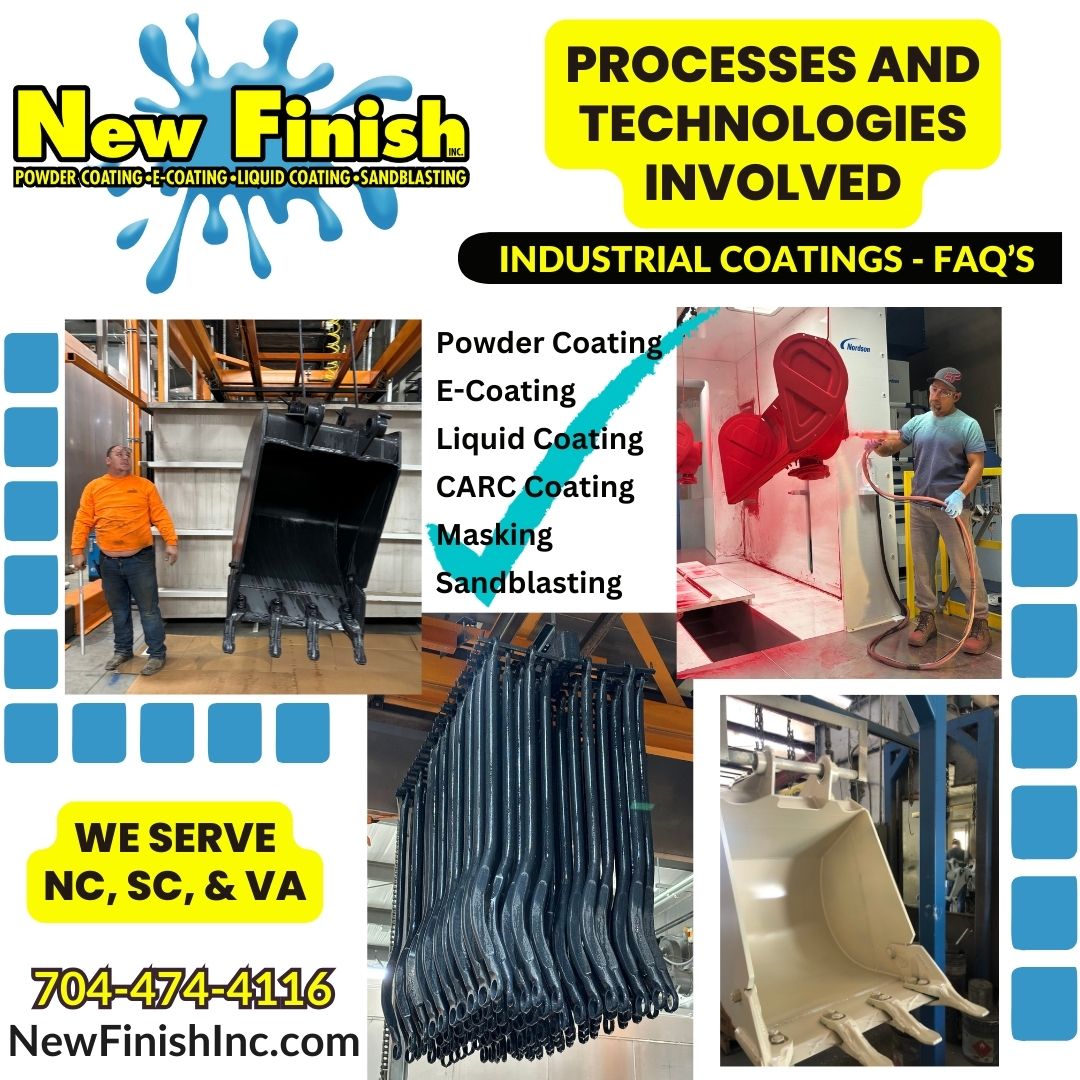Whether you’re a seasoned professional or just beginning to explore the realm of coatings, our Frequently Asked Questions (FAQs) are designed to provide clarity and insight into the various processes and technologies involved.
From powder coatings to e-coating, and from masking to sandblasting, we’ll address common queries to help you better understand these vital aspects of industrial finishing.
- Powder coatings are a dry finishing process where finely ground particles of pigment and resin are electrostatically sprayed onto a surface. They are then cured under heat to form a durable and protective layer. Powder coatings offer excellent resistance to corrosion, chemicals, and UV rays, making them ideal for various applications, including heavy equipment coatings and military coatings.
2. How does Liquid Coating differ from Powder Coating?
- Liquid coatings involve applying a liquid paint or coating onto a surface using various methods such as spraying, brushing, or dipping. Unlike powder coatings, liquid coatings do not require curing under heat. They offer versatility in terms of color options and finishes but may not provide the same level of durability as powder coatings.
3. What is E-Coating and its Benefits?
- E-Coating, or electrocoating, is a process where a metal part is immersed in a paint bath containing a water-based paint emulsion. An electric current is then passed through the bath, causing the paint particles to deposit onto the surface evenly. E-coating provides excellent corrosion resistance and coverage, making it ideal for automotive and industrial applications.
4. What is CARC Coating and its Importance?
- Chemical Agent Resistant Coating (CARC) is a specialized coating used primarily by the military to protect equipment from chemical and biological agents. It provides resistance to harsh environments and chemical exposure, ensuring the longevity of military equipment in demanding conditions.
5. What is Masking in Industrial Coatings?
- Masking is the process of covering certain areas of a surface to protect them from being coated. It ensures precise application of coatings and prevents unwanted paint or coating from adhering to specific areas. Masking is essential for achieving clean and professional finishes in industrial coating projects.
6. What is Sandblasting and its Role in Coatings?
- Sandblasting is a surface preparation technique that involves propelling abrasive materials at high velocity to remove rust, paint, or contaminants from a surface. It creates a clean and roughened surface, promoting better adhesion of coatings. Sandblasting is often used in conjunction with powder coating to ensure optimal surface preparation and adhesion.
Serving Locations in NC, SC, and VA
At New Finish Industrial Coatings, we proudly serve clients in North Carolina (NC), South Carolina (SC), and Virginia (VA) with our advanced industrial coatings and services. Whether you require precise powder coating & sandblasting, industrial liquid coating, or specialized coatings for heavy equipment and military applications, we have the expertise and capabilities to meet your needs.
ISO Certified and Class A Finish
Rest assured, our facility is ISO certified, ensuring the highest standards of quality and consistency in our powder coating processes. Additionally, we maintain a Class A finish, adhering to strict guidelines to deliver superior results in every project.
Choose New Finish Industrial Coatings for reliable and precise industrial coatings tailored to your requirements – get in touch today!
#IndustrialCoatingsFAQ #PowderCoatings #LiquidCoatings #ECoating #CARCCoating #Masking #Sandblasting #NC #SC #VA #HeavyEquipment #MilitaryCoatings #SurfacePreparation #ISOcertified #ClassAFinish #NewFinishIndustrialCoatings

